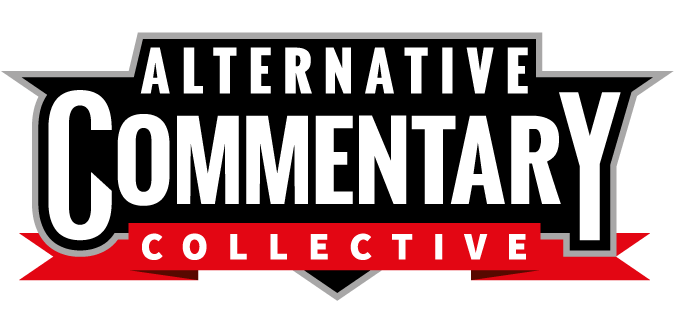📰 What's it like watching the All Blacks in the USA?
- Publish date
- Tuesday, 23 Jul 2024, 8:01AM
All Blacks coach Scott Robertson summed it up perfectly: “America, they do some sport well, man.”
“The set-up beforehand, the tailgate parties, the atmosphere – the injury breaks were pumping.”
New Zealand’s test against Fiji at San Diego’s Snapdragon Stadium felt almost exactly like what you see in the movies.
From the diverse food options to the enthusiastic fans, the varied seating arrangements and the vibrant atmosphere, every detail of the match-day experience was meticulously crafted.
The game had all the ingredients for a memorable sporting occasion.
The world-class All Blacks with their most passionate (and often critical) fans, squaring off against the loyal and determined Fijian side, in front of many American sports fans still puzzled by the lack of protective gear in rugby. It was a refreshing change from the usual New Zealand rugby scene.
The All Blacks’ 47-5 victory was a performance that delighted fans as much as it did Robertson.
From the outset, the majority of the 33,217 spectators made it clear who they were there to see. Their roars erupted for 2023 World Rugby Player of the Year and New Zealand vice-captain Ardie Savea as he was announced in the starting XV. The cheers grew even louder as the All Blacks began their haka.
For the players themselves, it was unfortunate they couldn’t witness how special they were to their international fans, as 100-metre-long lines at All Blacks merchandise stalls formed at three corners of the stadium.
A local explained to me how American sports fans aren’t obsessed with winning and local teams don’t have to be getting results to be commercially successful. Comradery and a great in-game experience are what keep fans coming back – and walking around the concourse, you certainly picked up that sense.
The atmosphere was unmatched by any current New Zealand stadium. If there was any positive to come out of the All Blacks’ trip to San Diego it’s the feedback they’ll be able to contribute to the Auckland stadium debate.
The brand-new stadium – home to the San Diego State Aztecs football team and the San Diego Wave National Women’s Soccer League (NWSL) team – had a good balance of luxury and leisure sports viewing. In the stands, it wouldn’t have mattered what seat you could afford: almost any seat in the house was a good view.
For those wanting a different type of experience, there were opportunities to watch the game on big screens while mingling and sipping cocktails at any of the various bars, clubs and beach lounger chairs plotted around the concourse.
However, surely the best view was that of the VIP guests like NFL star Todd Gurley, who were parked up at the rooftop pier that looked like a diving board.
Other locals told me this stadium was the pinnacle of American sports venues, but noted that many others are trending towards this high standard.
The food was as you’d expect: corn dogs, cotton candy, extra-large bags of popcorn, burgers and tall cans of beer.
However, those in attendance running a New Zealand bank account will likely be paying for it the next day: one of those cans costs around US$16 ($26).
I got a taste of the cultural differences between Aotearoa and the United States when stumbling across one of the many groups tailgating in the carpark pre-game. The Kiwi-American whānau invited me over to share their fresh kai, which included prawns, crayfish and corn on the cob.
Americans seemingly like to make a day of a sporting event, with activations and food carts in full action outside the venue hours before the stadium doors even opened.
Throughout the night there was little yelling or drunken behaviour, contrary to what you might get in New Zealand. The stands were kept tidy and were well-respected. Fans even diligently separated their rubbish into landfill, recycling and compost bins!
The most disappointing thing about the American fans was they couldn’t belt out Dave Dobbyn’s Slice of Heaven when it played over the loudspeakers in the second half.
New Zealand debutant Sam Darry said it was a great experience to be a part of.
“Americans love this sport and American Kiwis or people over here know how to really support,” Darry said.
“Obviously the times there’s a few stoppages out there but the fans just, you know, keep cheering, keep bloody being happy to be there and they just make it such a good time.”
All Blacks winger Caleb Clarke joked that sometimes the fans were overly passionate.
“There was a point where I was screaming at Billy [Proctor], at Wallace [Sititi] and they couldn’t hear me and I was, like, 10 metres away from them. I was like ‘gosh, shut up for, like, 10 seconds’,” Clarke laughed.
Clarke said playing this feature match was an important step to help grow the game in other parts of the world.
“The Fijians have that Fijian flair whenever they play – so coming up to a place like America, who doesn’t often see international rugby, [they] get to see the flashy side that... the Fijians bring. And then also us getting to show our culture with the haka.
“I know that’s probably one thing that Americans know of New Zealanders – the All Blacks and the haka.
“So it’s just real special and just speaking to some of the supporters out there – they had no idea what was happening, but they just loved the vibes.”
This article was first published on nzherald.co.nz and is republished here with permission


